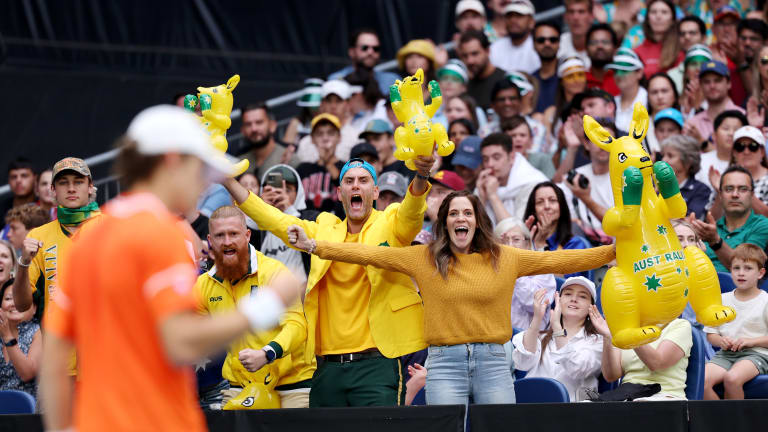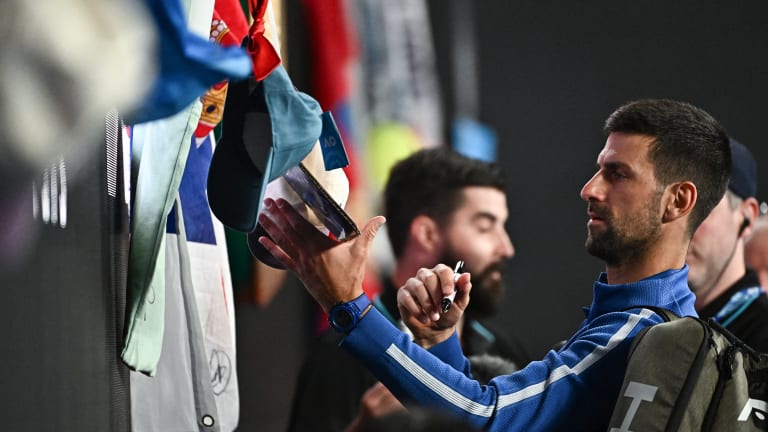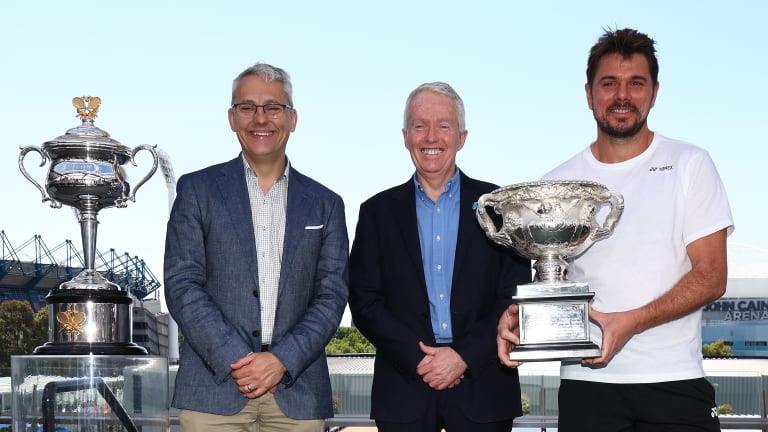Australian Open
The Australian Open’s radical idea is right: Ticket-holders should be allowed to watch as much tennis as possible
By Jan 19, 2024Australian Open
Jannik Sinner does it his way: He chose tennis over skiing and selected his new coaching team
By Jan 31, 2024Australian Open
The State of the ATP: What we learned from the 2024 Australian Open
By Jan 30, 2024Australian Open
'Grandissimo': Italian Premier Giorgia Meloni welcomes home Australian Open champion Jannik Sinner
By Jan 30, 2024Australian Open
The State of the WTA: What we learned from the 2024 Australian Open
By Jan 30, 2024Australian Open
The doubles mastery, and radical fun, of Hsieh Su-Wei
By Jan 29, 2024Australian Open
Pope Francis congratulates Italy after tennis player Jannik Sinner wins the Australian Open
By Jan 29, 2024Australian Open
'I like to dance in the pressure storm,' Jannik Sinner says ... and he did just that in his Australian Open triumph
By Jan 28, 2024Australian Open
First of many? Jannik Sinner's five-set comeback sinks Daniil Medvedev in Australian Open final
By Jan 28, 2024Australian Open
Soccer-mad Italy is now obsessed with tennis player Jannik Sinner after his Australian Open title
By Jan 28, 2024Australian Open
The Australian Open’s radical idea is right: Ticket-holders should be allowed to watch as much tennis as possible
Tournament director Craig Tiley's latest innovation—increased fan movement in the stands—has been met with mixed reviews from players.
Published Jan 19, 2024
Advertising

The break from tradition of allowing fans to sit down during even games has been met with mixed reviews from players.
© Getty Images
Advertising

Djokovic was sympathetic to the logic behind the change, but had his own opinions on whether it was actually constructive.
© AFP or licensors
Advertising

AO tournament director Tiley (center) has had a history of making bold moves for the betterment of the fan experience.
© Getty Images